How to Improve Click Through Rates in Google Ads
- Chase McGowan

- Aug 26
- 14 min read
If you want to improve your click-through rate (CTR), you need to obsess over one thing: relevance. The closer your ad’s message is to what someone just typed into Google, the higher the chance they’ll click. Getting this right isn't about guesswork; it's about surgical ad copy, tightly-themed ad groups, and the smart use of extensions—the kind of detailed work that bloated agencies simply can't deliver.
Why Your Agency Is Failing at Improving CTR
Let's be blunt. If you've hired a big Google Ads agency and your click-through rates are stuck in the mud, you’re probably a victim of their business model. They sell you on the idea of a massive team, but in reality, your account gets passed down to a junior manager who’s just following a generic playbook. They're incentivized to manage your budget, not maximize it.
This cookie-cutter approach is a death sentence for CTR, a metric that thrives on nuance and specialization. A dedicated specialist like myself lives and breathes your account day-to-day. An agency's junior employee just ticks off boxes on a to-do list shared between dozens of clients.
The Agency Playbook vs. Expert Precision
The fundamental issue with the big agency model is that it’s built for volume, not for performance. They’re designed to juggle dozens, sometimes hundreds, of clients at once. That structure is what leads to the critical mistakes that are tanking your click-through rates.
So, what does this look like in the real world?
Cookie-Cutter Ad Copy: Junior managers lean heavily on templates. The result is generic ads that don't speak to the specific pain points or desires of your audience. As an expert consultant, I write bespoke copy that’s tailored to the searcher's intent for every single ad group.
Bloated Keyword Lists: To save time, it’s common for agencies to dump hundreds of broad-match keywords into one ad group. This guarantees a mismatch between what someone searches for and the ad they see, which absolutely destroys relevance and sends your CTR plummeting.
Rigid, Inflexible Processes: Large agencies often work on a rigid schedule, maybe looking at your account weekly or, even worse, monthly. As an independent consultant, I am far more agile, making daily tweaks to bids, copy, and keywords based on what the data is telling me in real-time.
I once took over an account for a local contractor that was managed by a well-known, overpriced agency. Their CTR was stalled out at a dismal 1.8%. The agency had thrown "emergency plumbing," "leak repair," and "drain cleaning" all into a single ad group, showing the exact same generic ad for every search. This is the volume approach in a nutshell.
After I broke the account down into hyper-specific ad groups—each with its own highly relevant ad copy—we pushed their CTR to over 7.5% within the first month. That’s the difference between an agency checking a box and an expert providing genuine, hands-on management.
The Real Cost of Neglect
A stagnant CTR is more than just a missed opportunity—it's actively costing you money and losing you ground to your competitors. When your CTR is low, Google’s algorithm sees your ads as irrelevant. This drags down your Quality Score, which means you have to bid more per click just to hold your ad position.
The agency model often tolerates this because their main goal is to manage your budget, not to maximize every single dollar. For an individual specialist like me, every click and every dollar is personal. My goal isn't just to spend your budget—it's to turn it into a powerful engine for real growth. Improving your click-through rate demands a personalized strategy, not a mass-produced one.
Build a Hyper Relevant Campaign Structure
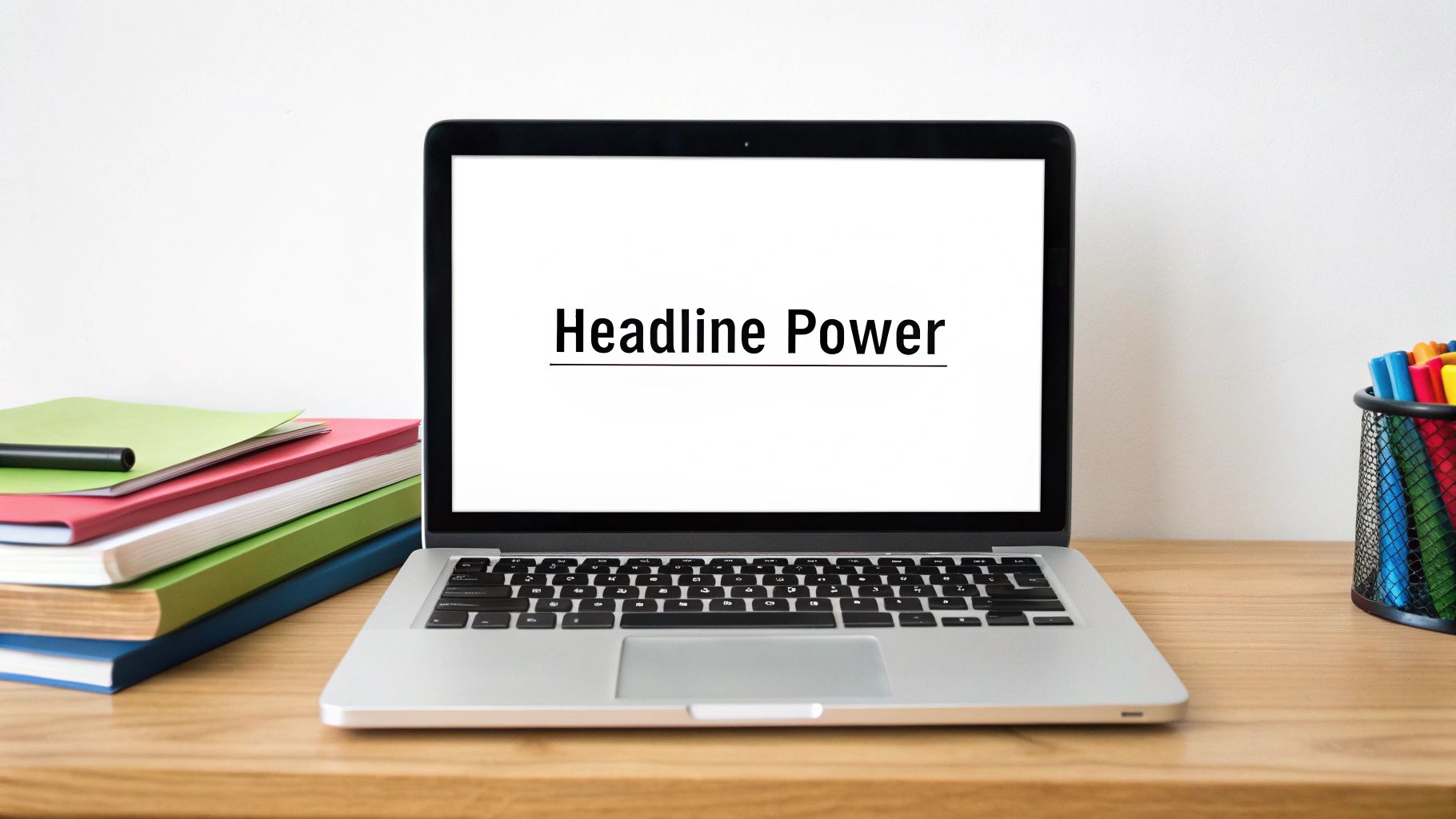
Here's a hard truth: your click-through rate is a direct reflection of relevance. When your ad perfectly matches what someone is searching for, they click. When it doesn't, they just scroll right past. It’s that simple.
This is why campaign structure is the absolute bedrock of a high CTR, and it's where most bloated, big-box agencies get it disastrously wrong.
Their standard playbook involves cramming hundreds of loosely related keywords into a single ad group. Why? It's fast and easy for their junior account managers. But it's catastrophic for your performance. Showing an ad for "emergency plumbing services" to someone searching "DIY sink faucet repair" is just burning cash and guarantees your CTR will sink like a stone.
As a specialist, I operate on the opposite philosophy: hyper-relevance. I don't just dump keywords into a bucket. I dissect user intent and build a campaign that functions like a series of perfectly aimed arrows, not a scattergun blast.
The Foundation: Tightly Themed Ad Groups
First things first, we have to abandon the lazy agency idea of large, all-encompassing ad groups. This is non-negotiable. Instead, I build small, tightly-themed ad groups, often with just a handful of extremely similar keywords.
Think of it like organizing a library. A big agency throws all the books into one giant pile labeled "Books." As a specialist, I create individual sections for fiction, non-fiction, history, and so on. That granular organization ensures when someone asks for something specific, they get exactly what they're looking for.
Let's take an e-commerce store selling running shoes. An agency wouldn't just have one ad group for "running shoes." That's a rookie mistake. As a dedicated expert, I would build out separate, dedicated ad groups for:
Men's trail running shoes: Targeting keywords like "best trail running shoes for men" or "men's waterproof trail runners."
Women's marathon racing flats: Hitting terms like "women's carbon plate racing shoes" or "lightweight marathon shoes for women."
Kids' track spikes: Going after searches like "youth track spikes for sprinters" or "kids' running spikes size 5."
This level of detail means the ad copy for "men's trail shoes" can talk directly about durability and grip, while the ad for "marathon flats" can scream about speed and lightweight design. This precise message match is what convinces a real person to click.
A campaign's structure is its DNA. A flawed structure will always produce weak results, no matter how much you spend. Getting the ad groups and keyword themes right from the start is the most powerful lever you can pull to improve click-through rates.
Surgical Precision with Negative Keywords
Choosing the right keywords is only half the battle. Excluding the wrong ones is just as critical. This is where the surgical application of negative keywords comes into play. They act as a shield, preventing your ads from showing up for irrelevant searches, which protects your budget and keeps your CTR from getting diluted.
Most agencies use generic, pre-made lists of negative keywords and call it a day. A dedicated expert treats negative keyword research as a dynamic, ongoing process. I live in your Search Terms Report—analyzing it weekly, sometimes daily—to find and block queries that are a complete waste of money.
Imagine you sell premium "graphic design software." Without careful management, you’ll inevitably show up for searches like:
"free graphic design software"
"graphic design jobs"
"graphic design tutorials"
Every one of those clicks comes from someone who has zero intention of buying your product. By adding "free," "jobs," and "tutorials" as negative keywords, you immediately stop that waste. Your ads are now reserved for users with actual commercial intent. This simple act alone can dramatically boost your CTR by focusing your impressions on the most qualified audience.
This is the kind of meticulous, ongoing work that a specialist provides but an overburdened agency simply can’t. To see how this fits into the bigger picture, you can check out our guide on expert PPC campaign optimization beyond bloated agencies.
Once your campaign architecture is solid, the real fight begins: the battle for the click. On a crowded search results page, you have maybe two seconds to convince someone you have the answer they’re looking for. This is where you can instantly spot the difference between a generic, big-agency approach and the work of a dedicated specialist.
Big agencies often lean on templates and standardized copy. The result? Ads that feel robotic and just don't connect. As a consultant, my job is to get inside your customer's head. I’ll go way beyond just listing your services and instead focus on solving their immediate problem, hitting an emotional trigger, and making your ad the only one they'd even consider clicking.
This skill is more critical than ever. The average click-through rate for search ads actually plummeted by nearly 50% between 2017 and 2022. That’s a staggering drop, and it proves one thing: generic, uninspired ads are being completely ignored by users.
Ditch the Generic Calls to Action
Any agency can tell you to add a "strong CTA." Sure, that's table stakes. But a truly compelling ad cuts deeper. It taps into emotional triggers and highlights a unique value proposition—something your competitors can't, or simply won't, say.
A typical agency headline might be "Plumbing Services in Denver." Yawn. I would craft something that speaks directly to the user’s frantic search: "Fast 24/7 Leak Repair in Denver" or "Clogged Drain? We’ll Fix It Today." See the difference? We just shifted the ad from a passive statement to an active, urgent solution.
This visual breaks down how to make every part of your ad, especially the description text, work harder to earn that click.
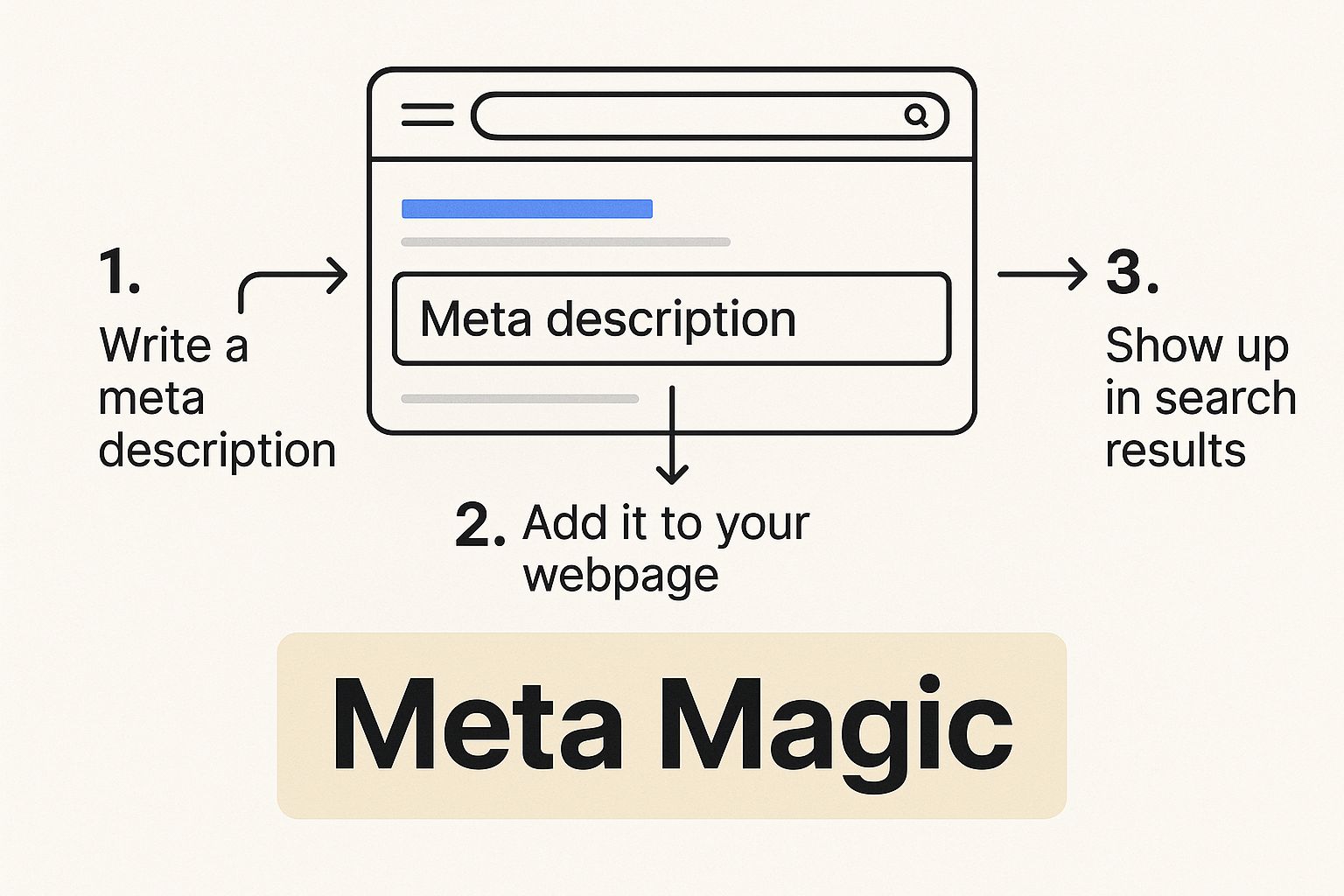
The main takeaway here is simple: your description has to back up the promise you made in the headline. It’s your chance to give them an undeniable reason to choose you over the three other ads sitting right there on the page.
My Specialist’s A/B Testing Framework
Improving ad copy isn't a one-and-done task. It's a relentless process of testing and refining. This is another place where big agencies, juggling dozens of clients, often drop the ball with a "set it and forget it" mindset. I build a structured A/B testing process into every single account to make sure we're always learning and always improving.
Your ad copy should feel personal, like a direct answer to the user's unspoken question. It's the difference between a megaphone shouting at a crowd and a one-on-one conversation that provides a solution. That personalized touch is what an individual expert delivers.
I don't just throw ideas at the wall. Every change is based on a clear hypothesis, whether we're tweaking a headline, rephrasing a description, or swapping a call to action.
For example, our test log might look something like this:
Hypothesis: Using a specific number ("2,147+ Happy Clients") will build more trust than a vague claim like "Trusted by Many."
Hypothesis: A question-based headline ("Tired of Slow Software?") will spark more curiosity than a feature-based one ("Our Fast Software").
This is how I turn guesswork into a reliable system for boosting click-through rates. Here’s a peek into the kind of systematic testing framework I use to turn average ad copy into a click-generating machine.
Ad Copy A/B Testing Framework From Average to Awesome
Element to Test | Control (Version A - Generic) | Variation (Version B - Optimized) | Hypothesis for CTR Lift |
|---|---|---|---|
Headline 1 | "Award-Winning CRM Software" | "Tired of Juggling Spreadsheets?" | Problem-agitation headline will resonate more with the user's pain point. |
Description | "Our software helps you manage customer relationships." | "Get a single view of your customer. Automate follow-ups & close deals 30% faster." | Specific benefits and data points will feel more tangible and valuable. |
Call to Action | "Learn More" | "Start Your Free 14-Day Trial" | A direct, no-risk offer will be more compelling than a passive CTA. |
Sitelink | "About Us" | "See Customer Case Studies" | Social proof will be a stronger motivator for B2B clicks than a corporate bio. |
By constantly testing and iterating with this kind of focused approach, I transform your ads from simple digital billboards into high-performance assets that drive real results. This is the level of detail that turns wasted ad spend into profitable growth. If you're ready to see this in action, learn more about how to hire a Google Ads expert to cut the waste and partner with a specialist.
Maximize Your CTR with Ad Extensions

Ad extensions are easily the fastest way to make your ads bigger, more informative, and a whole lot more clickable. Think of them as free real estate on the search results page.
It’s shocking how often they're underused by busy, bloated agencies that just don't have the time or specialized focus to get them right. That’s a massive missed opportunity that costs their clients money.
More ad real estate naturally grabs more attention and directly boosts your CTR. For an individual consultant, meticulously building out a full suite of extensions isn't a chore—it’s a competitive advantage that makes your ads physically dominate the page.
Moving Beyond Basic Sitelinks
Sure, any agency can add a few sitelinks and call it a day. That's the bare minimum.
A true specialist knows the real power of extensions is in their strategic variety. I'm not just making the ad bigger; I'm adding layers of value that speak to different user needs right there in the search results.
This is about creating a far more compelling ad that answers questions before the user even clicks. You're no longer just making a single promise; you're presenting a multi-faceted solution.
Structured Snippets: These let you highlight specific aspects of your products or services. A software company could list "Features: Invoicing, Time Tracking, Payroll," instantly showing its core value.
Callout Extensions: These are perfect for short, powerful trust signals and offers like "Free Shipping," "24/7 Customer Support," or "Money-Back Guarantee."
Price Extensions: Want to build immediate trust? Displaying pricing upfront for specific services filters out tire-kickers and attracts qualified leads who are ready to buy.
When an ad uses extensions this way, it stops being a simple text ad and becomes an interactive, information-rich billboard. This is the difference between an agency checking a box and an expert building an asset designed for maximum engagement.
The Visual and Informational Advantage
The real magic happens when you combine multiple extensions. An ad fortified with sitelinks, callouts, and structured snippets can take up significantly more screen space than a competitor’s basic ad.
That increased size alone boosts visibility and makes your ad much harder to ignore.
It also dramatically increases your ad's perceived relevance and authority. When a searcher sees you offer clear pricing, highlight key features, and provide direct links to important pages, you instantly look more credible and established than the competition.
The Specialist’s Edge in Extension Strategy
A large, overworked agency often slaps a one-size-fits-all extension strategy across all its clients. It's a lazy approach that leaves performance on the table.
As a dedicated consultant, however, I tailor the extension mix to your specific campaign goals. An e-commerce campaign, for instance, should heavily prioritize price and promotion extensions to drive immediate sales. A local service business, on the other hand, will get far more value from location, call, and lead form extensions to generate local inquiries right now.
This level of customization requires time and attention to detail that simply doesn't fit the high-volume agency model. When you partner with a specialist, you get a strategy where every single extension serves a purpose.
This meticulous work also has a positive impact on your impression share, making sure your supercharged ads are seen by more potential customers. You can dive deeper into how this works by reading our detailed explanation of what impression share is and how to boost your performance. This strategic implementation is a clear advantage an expert brings to the table, turning a simple feature into a powerful tool for growth.
Align Your Landing Page for Better Ad Performance
A click isn't the finish line. It’s the starting gun.
What happens after someone clicks your ad is just as important to Google as the ad itself. A clunky, confusing, or irrelevant landing page sends a clear signal to the algorithm: "This ad wasn't a good fit." That single negative signal can torpedo your Quality Score, tank your click-through rates, and send your ad costs soaring.
This is where so many big, impersonal agencies get it wrong. They get laser-focused on CTR as an isolated metric, something to be tweaked inside the Google Ads interface. But as an experienced consultant, I know that CTR is just one piece of a much larger puzzle—a seamless journey that has to start with a search and end with a satisfying landing page.
The Non-Negotiable Rule of Message Match
If you remember one thing about landing pages, make it message match. It's the simple, powerful idea that the promise you make in your ad must be the very first thing a user sees on your page. Instantly. Obviously.
If your ad shouts, "50% Off Emergency Plumbing Services," your landing page headline had better scream the exact same thing. Any disconnect, even a small one, makes users feel like they've been tricked. They hit the back button in a heartbeat, and that bounce sends a brutal negative signal straight back to Google, poisoning your entire campaign.
This is a classic failure of the agency model, where the PPC manager and the web team barely speak the same language. A junior account manager might spin up a brilliant new ad campaign, completely forgetting to check if a dedicated, matching landing page even exists. When you work with a specialist, the entire strategy is cohesive. Every ad is built with its destination in mind.
A seamless experience is everything. The user should feel like they clicked a link that simply revealed more detail on the same page, not like they've been warped to a totally different website. This continuity builds instant trust and crushes bounce rates.
Core Elements of a High-Converting Landing Page
Beyond perfect message match, a few other elements are absolutely essential. Nailing these turns a good landing page into a great one that actively boosts your ad performance.
A Clear, Compelling Headline: It has to echo the ad's core promise and instantly confirm to the user, "You're in the right place."
A Singular, Strong Call-to-Action (CTA): Don't be shy. Tell the user exactly what to do next. "Get Your Free Quote," "Download the Guide," or "Start Your Trial" are all crystal clear. Avoid cluttering the page with multiple, competing CTAs that just cause confusion.
Blazing-Fast Load Times: Every second—no, every millisecond—counts. A page that takes more than three seconds to load is a conversion killer. Google sees users bouncing and penalizes you for it.
This intense focus on the post-click experience is what separates amateur efforts from professional, long-term success. It directly fuels your ad rankings and relevance signals. And getting a high rank is critical; the first organic position in Google search results vacuums up a massive 27.6% of all clicks. That number plummets down the page, with the tenth spot getting a measly 2.5% of clicks.
This data, highlighted in Backlinko's research on top search rankings, proves just how vital a top spot is.
Aligning your landing page isn't just a "best practice"; it's a fundamental requirement for winning at Google Ads. It’s the final piece that connects the dots and transforms a disjointed campaign into a cohesive, high-performing machine.
Common Questions I Hear About Improving CTR
Even with a solid plan, questions always pop up during the optimization grind. Getting direct, no-fluff answers is the key to moving forward with confidence—and avoiding the expensive mistakes that come from working with those big, impersonal agencies. As a hands-on consultant, I believe in explaining the why behind every move.
Here are the most common questions I get from business owners who are serious about getting their click-through rates dialed in.
What Is a Good Click-Through Rate for Google Ads?
This is the million-dollar question, and the honest answer is: it depends entirely on your industry. Chasing some universal, magic number is a rookie mistake that only leads to frustration. Instead, a real specialist focuses on two things: competitive benchmarking and continuous, internal improvement.
What works in one industry is a total flop in another. Across the board, Google Search Ads see an average CTR of about 3.17%, but some niches are way different. The Dating & Personals space, for example, can hit a 6.05% CTR, while more competitive fields like Technology and B2B are closer to 2.09% and 2.41%. You can dig into more of these numbers and find benchmarks for your specific industry over at amraandelma.com.
A "good" CTR isn't a static number you pull from a blog post. It's a moving target defined by your market, your competitors, and—most importantly—your own historical performance. The real win is consistent, data-backed improvement, month after month.
How Long Does It Take to See CTR Improvements?
How quickly you see results really depends on what you're changing. The great thing about working with a nimble specialist, instead of a slow-moving agency, is how fast we can implement and see the impact.
You can often get an initial lift in CTR within just a few days of making targeted tweaks.
Simple, high-impact fixes can produce quick wins:
Sharpening up your ad copy
Adding a full suite of compelling ad extensions
Aggressively refining your negative keyword list
But for the bigger, more sustainable improvements that come from a full campaign restructure or major Quality Score overhauls, you're usually looking at a few weeks to a month. Google's algorithm needs time to gather new data, recognize your increased relevance, and reward you for it. It's a process of steady, strategic optimization, not an overnight miracle.
Can a Low CTR Hurt My Overall Google Ads Account?
Yes, absolutely—and this is a critical point that many bloated agencies just seem to gloss over. A low CTR is one of the most damaging metrics for your account’s health. It’s a direct signal you’re sending to Google that your ads just aren't relevant to what people are searching for.
That irrelevance directly tanks your Quality Score, which is the bedrock of your entire ad performance.
When your Quality Score drops, you're forced to pay a higher cost-per-click (CPC) just to hold your ad position. It's like a tax for being irrelevant. Eventually, Google might even start showing your ads less frequently.
So, actively working to improve your CTR isn't just about getting more clicks. It's one of the single most effective things you can do to lower your ad costs and boost your visibility across your entire account.
Tired of the slow, generic approach of a big agency? As an expert Google Ads consultant, Come Together Media LLC offers the specialized, hands-on management needed to drive real results. Let's build a strategy that turns clicks into customers. Schedule your free, no-obligation consultation at https://www.cometogether.media today.





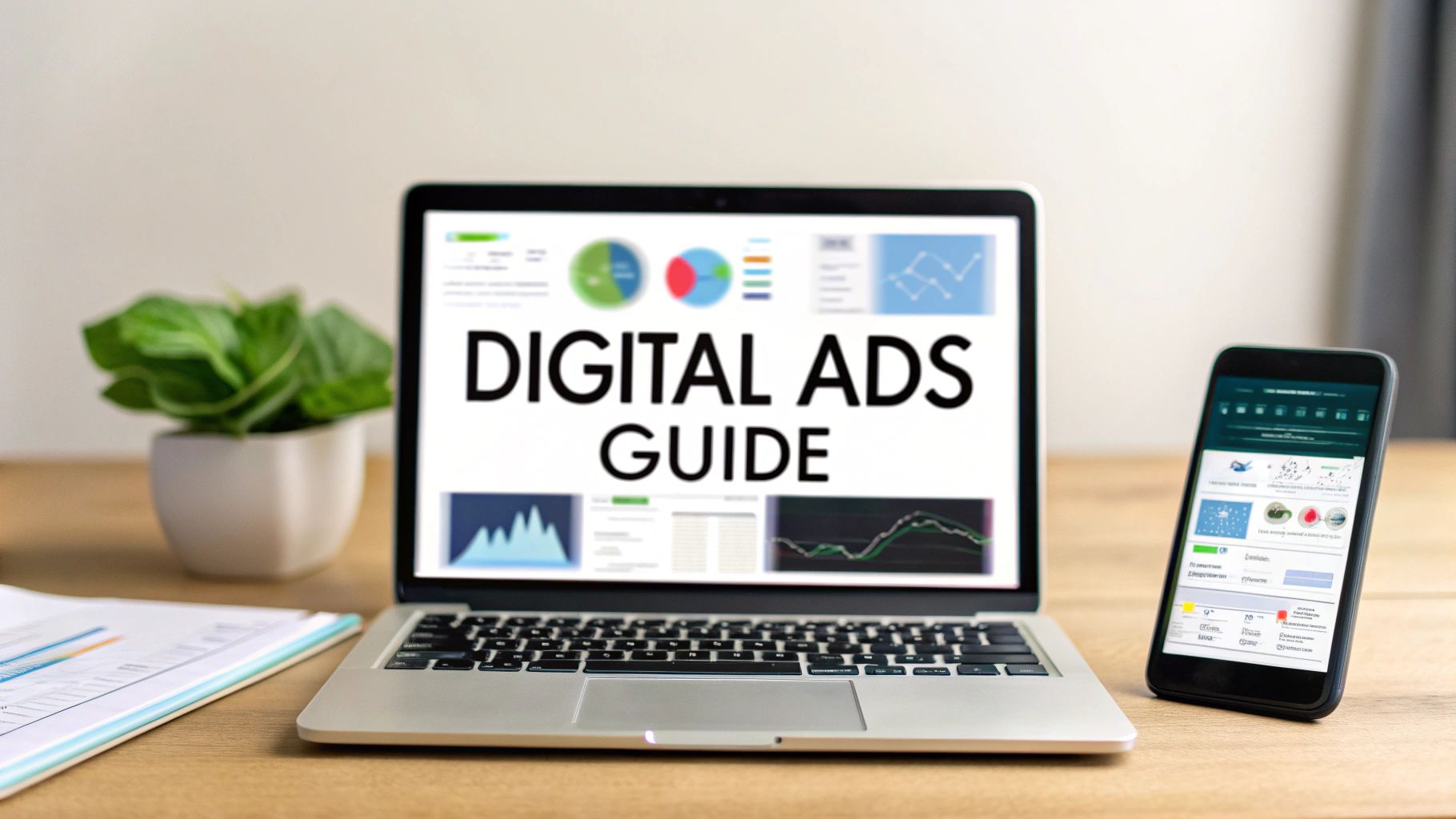

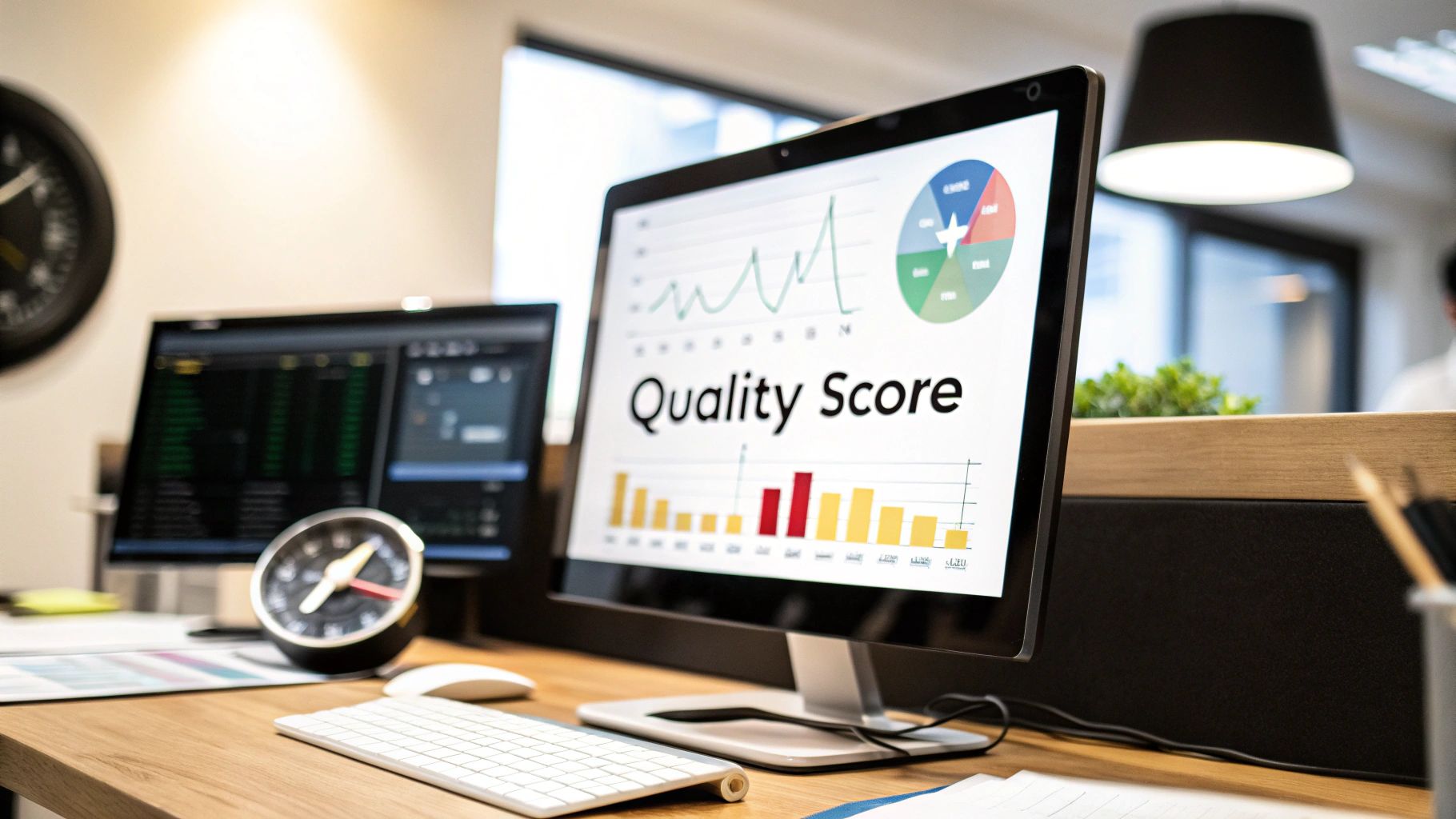
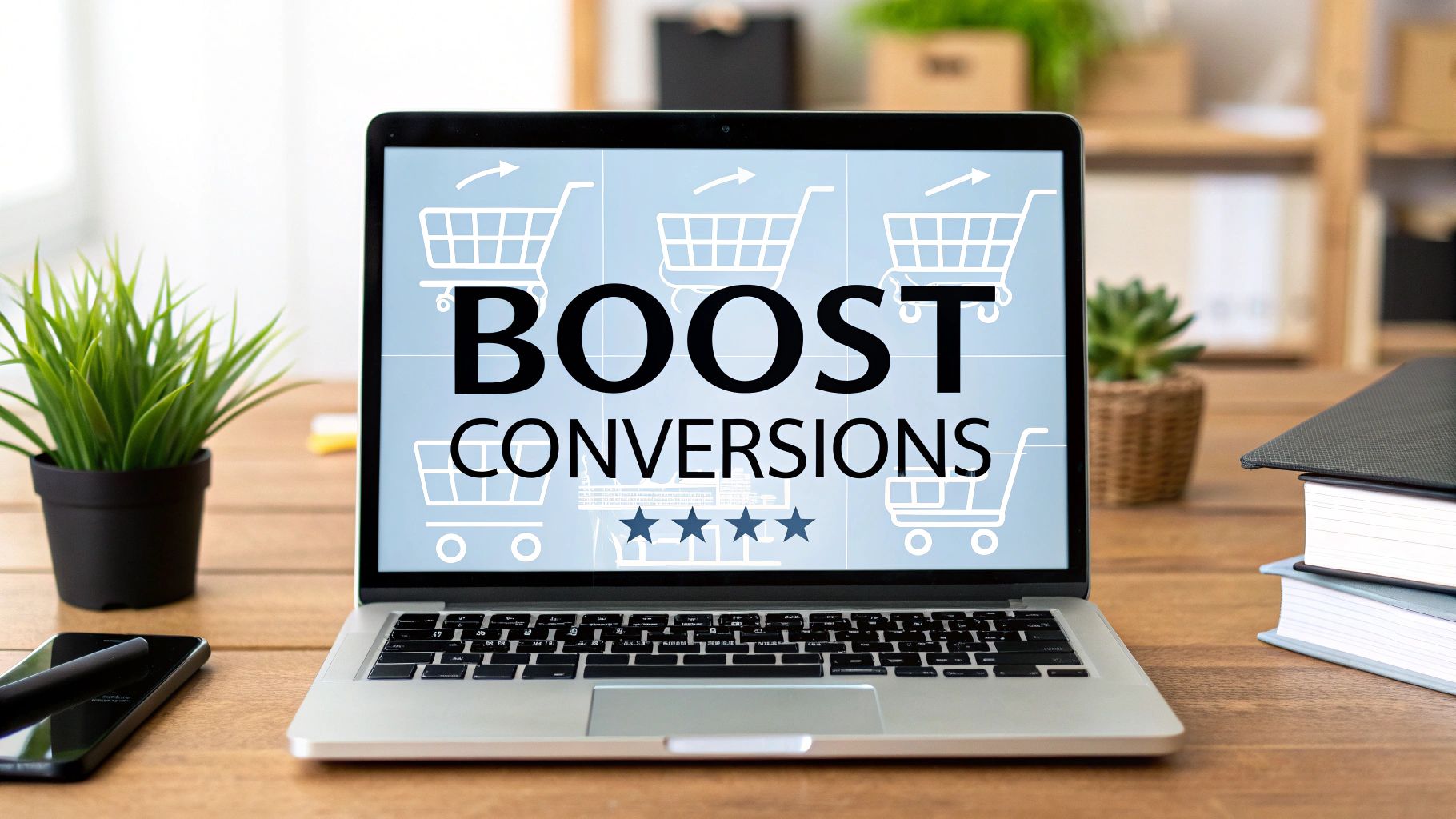
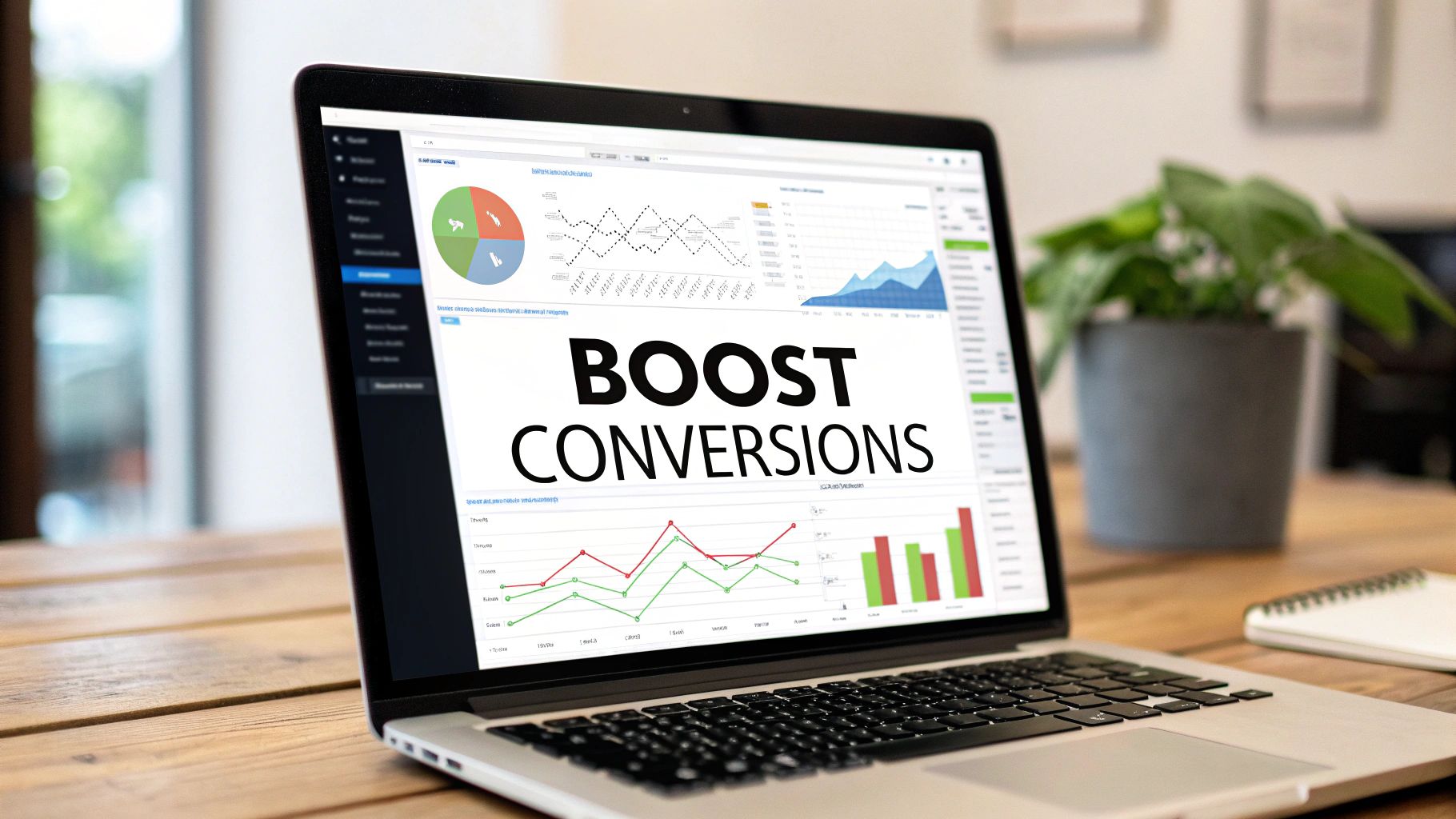
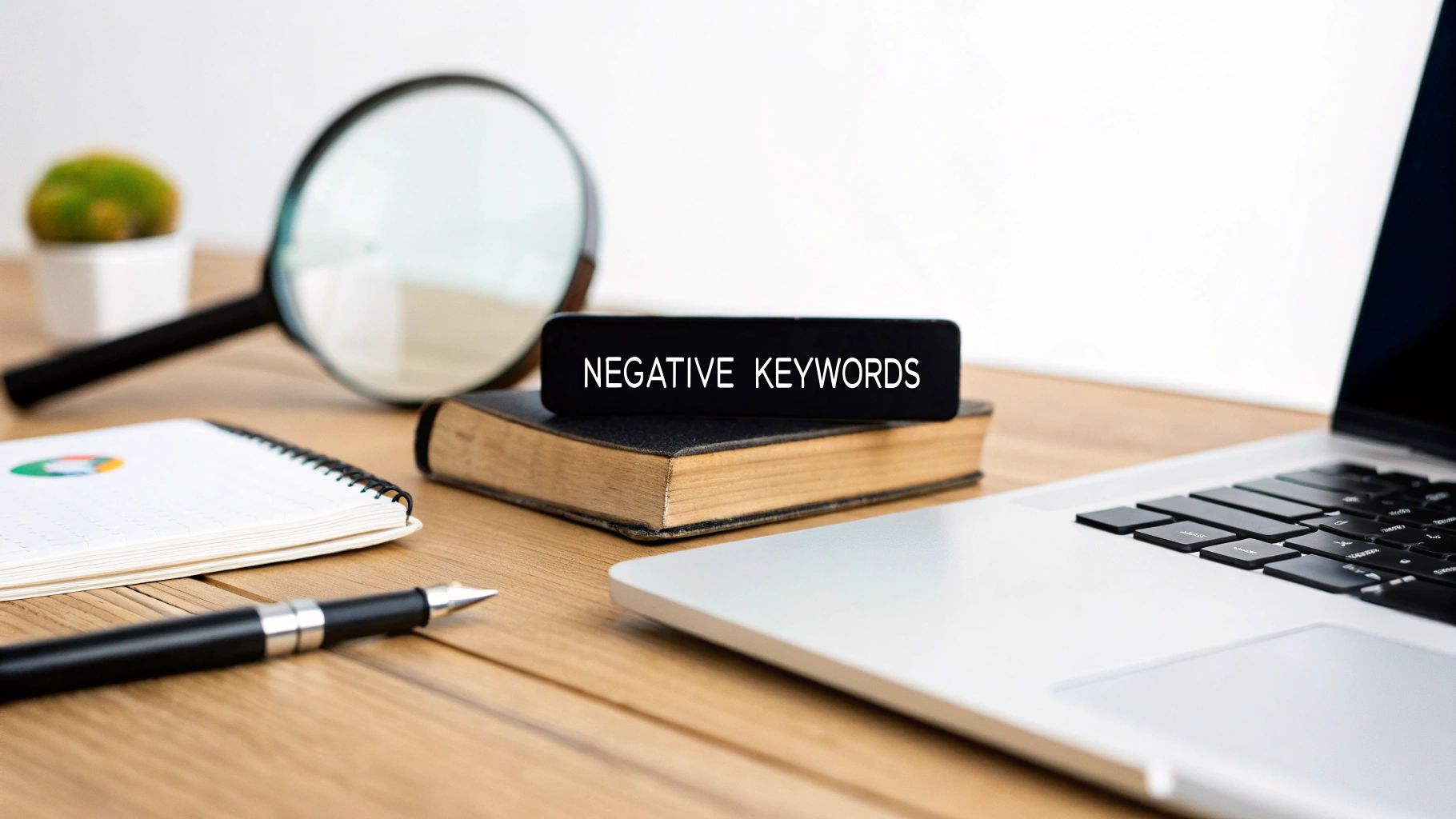
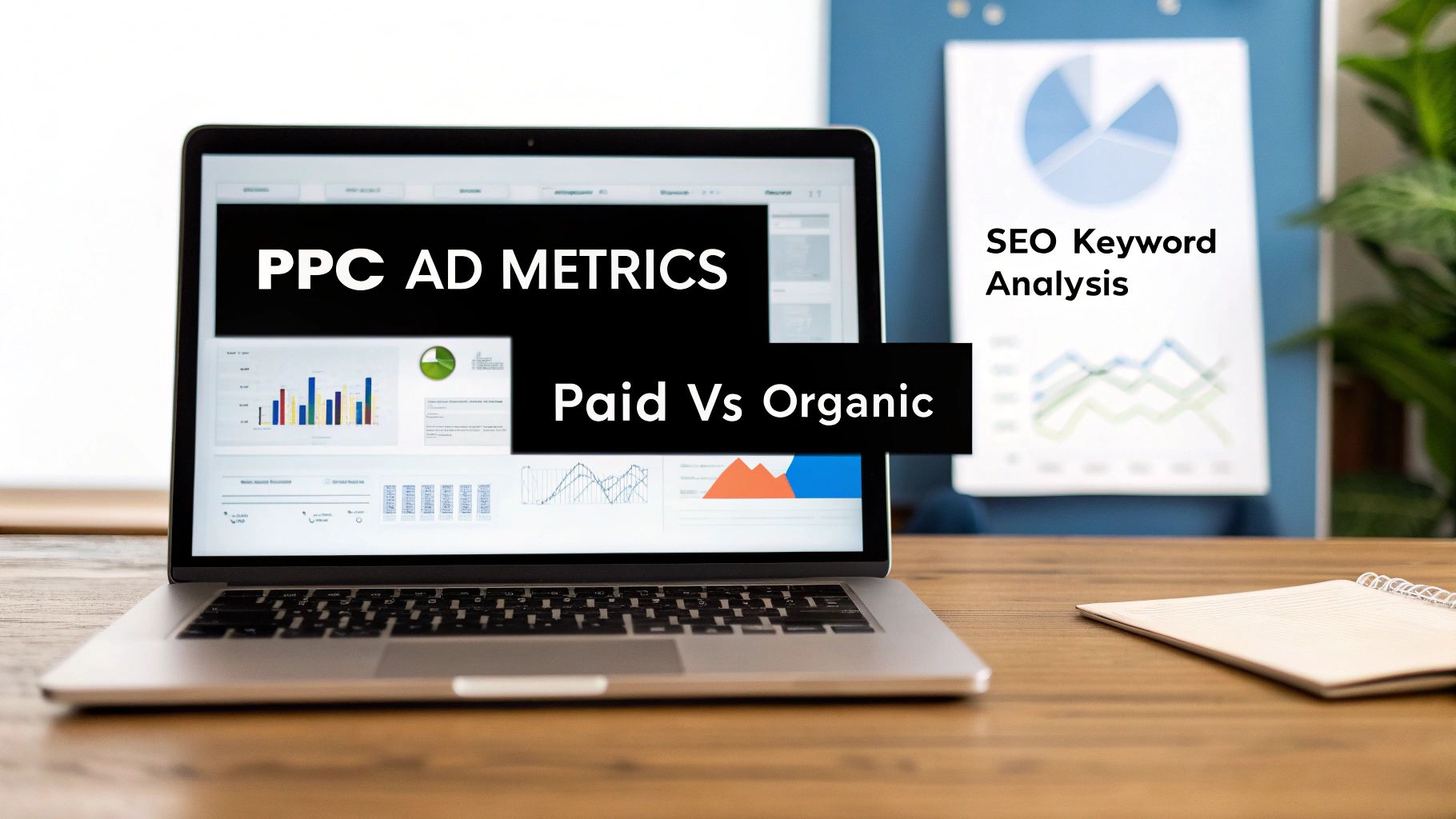
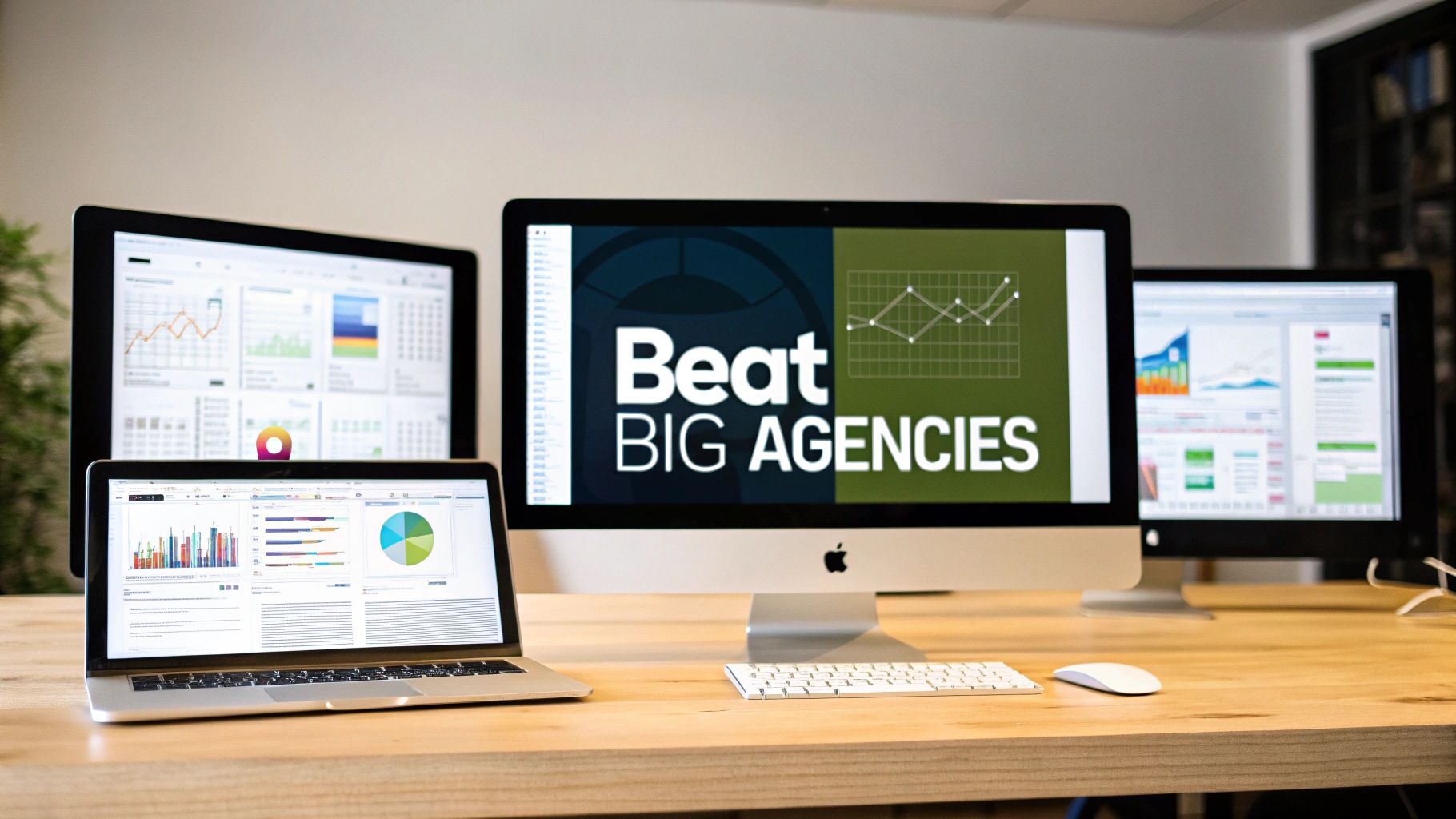
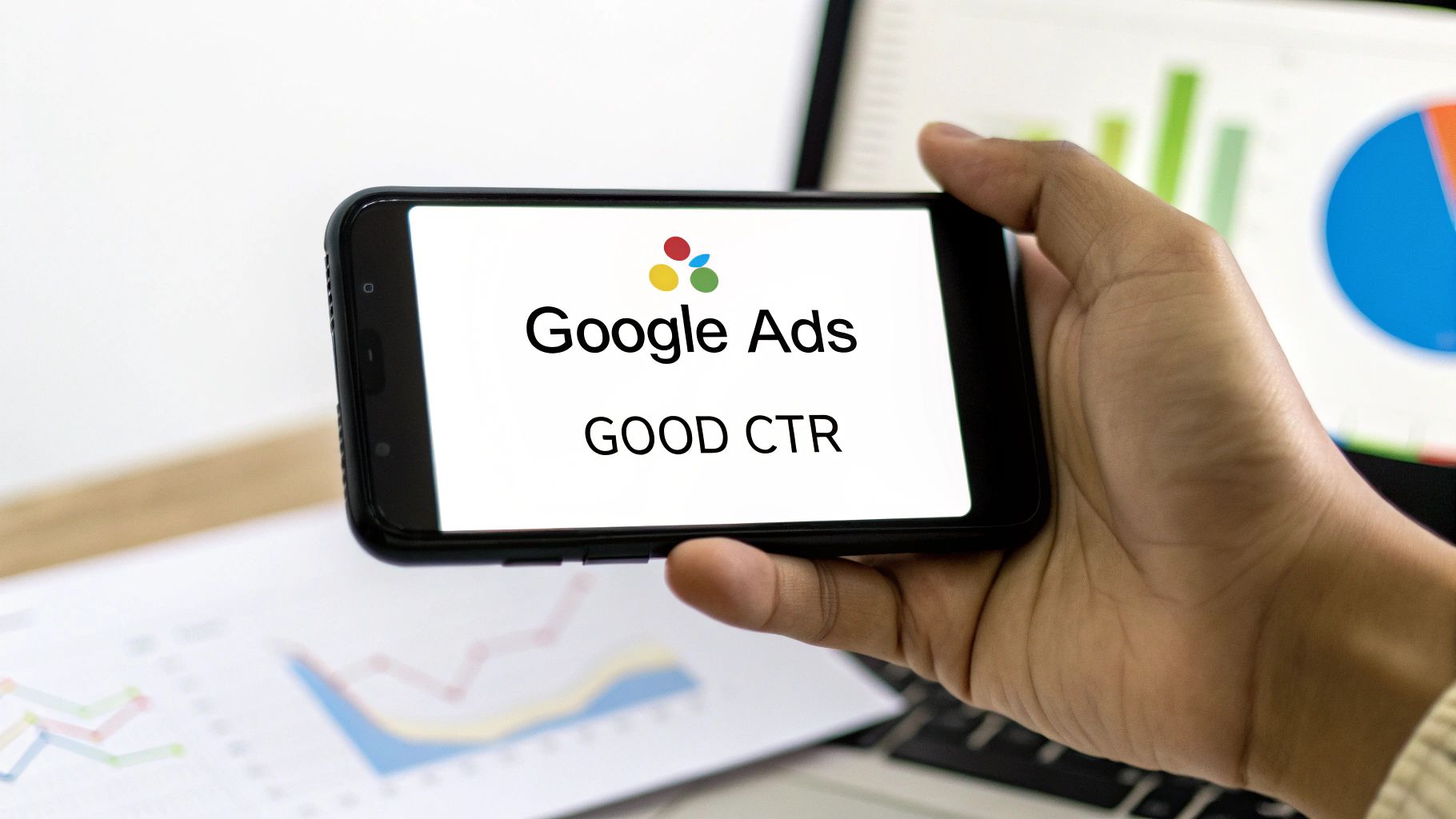
Comments